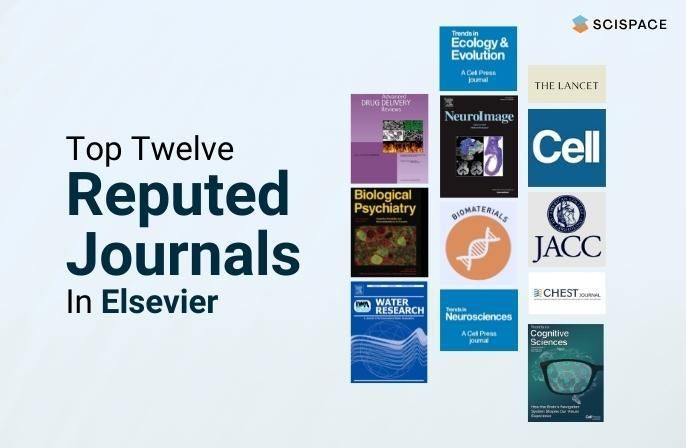Abstract. Those 300 words that argue why someone should take your paper seriously. Those 300 words that convince the world why months of your research matters. Those 300 words that let people decide whether to read your paper further or not.
An abstract is one of the most-read parts of a research paper. And is tricky for the same reason. Many times, research indexing databases like SCOPUS show only the abstract of the paper as search results. In fact, many researchers check out the abstract section to decide whether to further delve into the paper or not.
With a number of citations used as the prevalent metric for impact factor, it has become more important now than ever before, to write a clear, concise and, compelling abstract. An abstract is essentially the researchers’ elevator pitch to the world.

Now, the purpose of a research paper abstract is to effectively transfer your idea to the readers. The more effective your communication is, the better the chances that your research will be utilized for the greater good.
To get the abstract right, you need to have an idea that is worth shareable and then clearly describe
- The problem statement,
- Why it’s important to be probed?
- What was done to understand it? and
- What was found as a result?
A real-world example
Let’s take the abstract from the 1988 paper titled ”Praise for Intelligence Can Undermine Children’s Motivation and Performance” by renowned author Carol Dweck.
Praise for ability is commonly considered to have beneficial effects on motivation. Contrary to this popular belief, six studies demonstrated that praise for intelligence had more negative consequences for students’ achievement motivation than praise for effort. Fifth graders praised for intelligence were found to care more about performance goals relative to learning goals than children praised for effort. After failure, they also displayed less task persistence, less task enjoyment, more low-ability attributions, and worse task performance than children praised for effort. Finally, children praised for intelligence described it as a fixed trait more than children praised for hard work, who believed it to be subject to improvement. These findings have important implications for how achievement is best encouraged, as well as for more theoretical issues, such as the potential cost of performance goals and the socialization of contingent self-worth.
Here the author clearly states the main idea of the paper using the title. This clarifies the central theme to the reader.
Now the problem statement is made crisp and clear in the first half of the abstract.
Praise for ability is commonly considered to have beneficial effects on motivation. Contrary to this popular belief, six studies demonstrated that praise for intelligence had more negative consequences for students’ achievement motivation than praise for effort.
Here, the author clearly mentions a common assumption. And why it is a problem.
How the author went about understanding the problem and what happened as a result?
Fifth graders praised for intelligence were found to care more about performance goals relative to learning goals than children praised for effort. After failure, they also displayed less task persistence, less task enjoyment, more low-ability attributions, and worse task performance than children praised for effort. Finally, children praised for intelligence described it as a fixed trait more than children praised for hard work, who believed it to be subject to improvement.
Here the author briefly mentions the study and experiments that were run and what was the learning from the same.
Why this is important for readers to know?
These findings have important implications for how achievement is best encouraged, as well as for more theoretical issues, such as the potential cost of performance goals and the socialization of contingent self-worth.
By identifying the importance of the issue — the potential cost of performance goals, the author gets the reader to give sufficient importance to the study and its conclusions.
A quick read of popular research papers in your domain would give you clarity on how abstract is similarly structured.
Now, that we saw how abstract is structured, let’s explore how to go about writing each of these parts that make for an effective abstract.
1. Idea worth sharing
Be it a blog or book or a research paper, readers’ incentive is to learn something new.
Your research paper idea can be an insight. Or a way of shattering commonly accepted assumptions. Or a new way of looking at the old problem.
As a reader, we look for ideas that add value to us. Ideas that we can apply elsewhere to generate more value. More importantly, ideas that are refutable — something that the author claims to be true and provides reasons and results to support.
It’s imperative as an author to have clarity on what this “main idea” is. What is the one thing you are trying to solve for? What is the “idea” you want the readers to receive? Communicating this central idea as a part of your research paper title/abstract is critical.
2. Problem statement
What is the problem you are trying to solve?
And more crucially, why it is a problem?
This closely relates to the central idea of the paper. Mention the current state and indicate why it’s a problem. Avoid using technical jargon and focus on communicating the problem in simple terms.
The more important and urgent the problem statement is, the stronger the need for the reader to understand the paper at hand.
3. Why it’s important?
What are the larger implications of your finding?
How does it impact the world at large?
Why it’s important for readers to know?
Saying “why” you are solving a problem has been identified as a crucial element to business success. And it’s more relevant to the academic world.
Once the problem statement is clear, readers evaluate whether it’s important enough to be solved for. By connecting the problem with the “why”, you have made the “pitch” on why your research is important.
4. What was done to understand?
What did you do to get your results?
How did you go about figuring out your “main idea”?
What methodology did you use?
Here you mention the studies, experiments, or methodologies used to understand and derive the results. For example, did you use simulation, analytic models, prototype construction, or analysis of field data? Mention that.
The methods used indicate, briefly, the procedure used to derive the results. This helps readers really interested in the problem to directly delve into the results section of the paper.
5. What happened?
At the end of finishing the studies and experiments,
What did you learn?
What did you find that was otherwise unknown?
What’s the answer?
With this part, you mention all the different “relevant” findings that directly impact your conclusion. You mention the “insights” that are core to your paper, insights that directly co-relate with your “central idea”. Avoid vague results such as “small”, or “significant.”
The more relevant and the more concrete the results, the faster the research is consumed.
Now, abstract for conferences or thesis papers follows a similar style. If you are writing an abstract for a conference that addressed a specific problem, then why the problem needs to be solved might not be needed.
If you are looking for a solution to simplify your research workflows, why not give SciSpace (Formerly Typeset) a try. SciSpace is a comprehensive and integrated end-to-end research platform that enables scholars to discover, write and publish research effortlessly and drive collaboration.
It comes with everything you need: a repository of 270 million research papers from across disciplines with SEO-optimized summaries, public profiles to showcase your experience and expertise, a specifically-built collaborative text editor, 20,000+ journal templates that can be inserted in a click, and so much more.
In view of your interest in simplifying research workflows, we suggest you take a look at SciSpace. In a single portal, you can complete all your research writing tasks, including literature searches.

SciSpace provides researchers, universities, and publishers with all the tools they need. Our comprehensive research repository features more than 200 million research papers from multiple disciplines with SEO-optimized abstracts, a publicly visible profile to highlight your expertise, a specially-built collaborative text editor, 20,000+ journal templates, and more.









